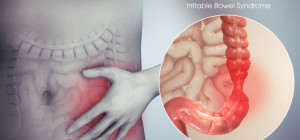Is a low-carb weight-reduction plan as powerful for diet as a low-carb/high-fats weight-reduction plan? You might be surprised at how essential a position the “excessive-fats” component plays in fat loss. Why do people love them a lot? How do properly and bad carbs affect your health? Let’s dig a little deeper to split fact from fiction and make this distinctly perplexing landscape a piece less difficult to navigate.
What are macronutrients?
There are 3 macronutrients to which all ingredients we eat smash down: Carbohydrate, Protein, and Fat. Many foods are a combination of the 3, inclusive of cheese, which has fat, protein, and a small quantity of carbohydrate from the clearly taking place milk sugar, lactose. Beans are some other example of a plant-primarily based protein source, however, they’re also excessive in carbohydrate (more often than not from fiber) and comprise trace quantities of fats. Alcohol may be regarded as a fourth macronutrient because it offers a caloric fee, but take into account that it presents no different dietary fee and consequently should NOT be considered the backbone of any wholesome food regimen!
Why are carbs so popular?
In the Standard American Diet (as it should be called SAD), carbohydrates are by way of a long way the maximum ample macronutrient because they are reasonably-priced, handy, and normally processed and loaded with sugars. This makes them very addictive and smooth to overeat. However, that doesn’t suggest that ALL carbohydrates are horrific. We just don’t generally tend to pick out those that do our our bodies accurate.
What’s the distinction between top and awful carbs?
The “properly carbs,” also called complex carbohydrates, include higher degrees of nutritional fiber as well as vital micronutrients from vitamins and minerals. Colorful culmination and greens in addition to unprocessed complete grains, starchy veggies (corn, peas, and potatoes), and beans are proper examples of complex carbs. On the opposite hand, “horrific carbs,” also known as simple carbohydrates, incorporate little or no nutritional value out of doors of electricity calories (from glucose). They additionally tend to return from much less colorful, refined, and processed pure-starch assets which includes sugar, delicate white flour, corn syrup, and fruit juices. As a standard rule of thumb, if it comes in a container, it’s likely loaded with easy carbs.
Why are simple carbs and excessive stages of glucose so bad?
Think of glucose as the main foreign money for energy in the SAD. If you’re on the point of run the Boston Marathon or hike Mount Kilimanjaro, having loads of glucose circulating and saved for your machine is a notable factor! However, maximum people drive in our vehicle to take a seat at a desk all day, then come home to sit on the sofa and watch TV earlier than heading to bed. So, what happens to all that glucose that isn’t used?
When we ingest carbohydrates, our bodies damage them down and convert them to glucose (more swiftly for the simple carbs than the complicated ones). The glucose then makes its way to our blood circulate. In order for our cells to apply this glucose currency as energy, our pancreas need to excrete insulin, the magic key that unlocks glucose from our blood to send it to our cells for immediate use. If we’ve extra glucose than on the spot energy want (e.G. Sitting at a table for 8 hours an afternoon), the extra will get stored in our muscular tissues and liver as glycogen, that is the storage shape of glucose.
What takes place to all the extra glucose?
We can handiest store a fixed quantity of glycogen, which depends on many elements, the primary one being our amount of muscle mass. Think of your glycogen stores as that closet within the spare bedroom. You can try to stuff as a whole lot junk in there as you need, but the closet is handiest so large, and in the end, the door will burst open and the junk will start to pour out and make a large number on the floor. Once your glycogen stores have been stuffed to the max, ANY extra glucose gets converted to fat and stored in new fats cells, which your frame is MUCH more So, on the cease of the day, it’s not fats this is making you fats – it’s all that darn sugar!
Our bodies prioritize the metabolism of macronutrients within the following order: carbohydrates, then protein, then fat. When we are seeking to shed pounds, too many carbohydrates in our weight loss program will restrict development due to the fact our bodies are not inclined to let go of fats stores until all of the glucose and glycogen were used up. You can think of carbs as a roadblock to burning fats. When they’re removed, or ingested minimally for instant use, our bodies start to look for alternative assets of gas and best then, will start breaking down saved fat for electricity.
Most human beings find slicing carbs out in their food regimen tough for some of reasons: they’re handy, they’re addictive (howdy, carb cravings!), and that they experience hungry all of the time. Most wellknown “low-carb” dieters tend to update dietary carbs with better levels of protein, which is difficult because our bodies will convert excess protein to glucose via a system called gluconeogenesis. So, while they’ll not be ingesting carbohydrates, their frame continues to be jogging off glucose which perpetuates the carb/sugar cravings.
Conclusion
Any food regimen that cuts out simple carbohydrates and is based extra on “real meals” from complicated carbs, fats, and proteins could be powerful at improving your fitness. However, if sustainable weight loss is your main goal, a weight-reduction plan that is low in carbohydrates, high in fats, and slight in protein can be a greater powerful, sustainable, and enjoyable alternative.
Contributed by https://www.myhealthhint.com/









